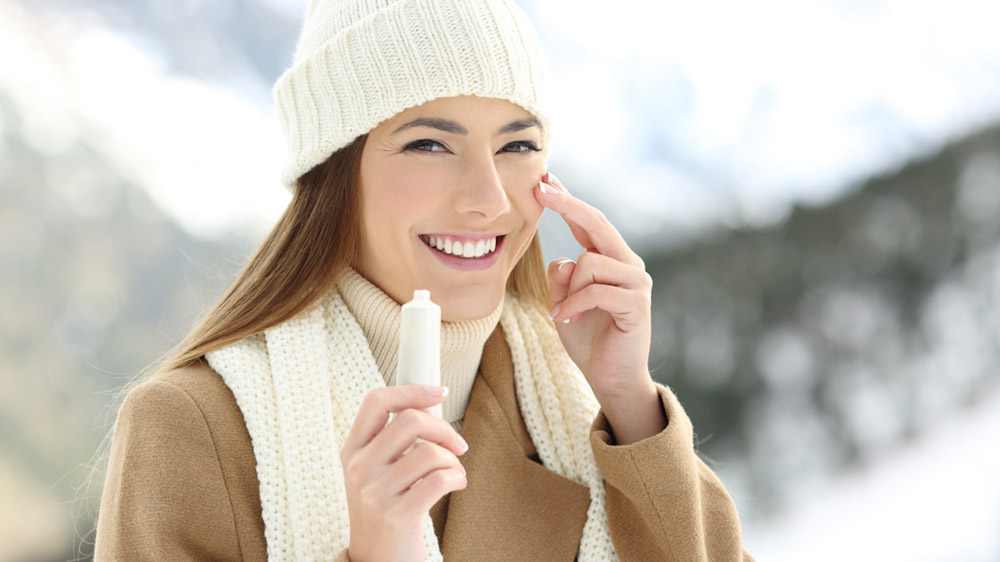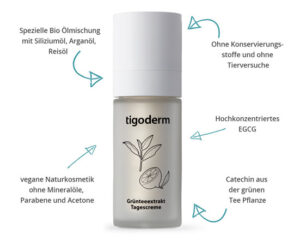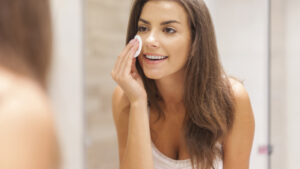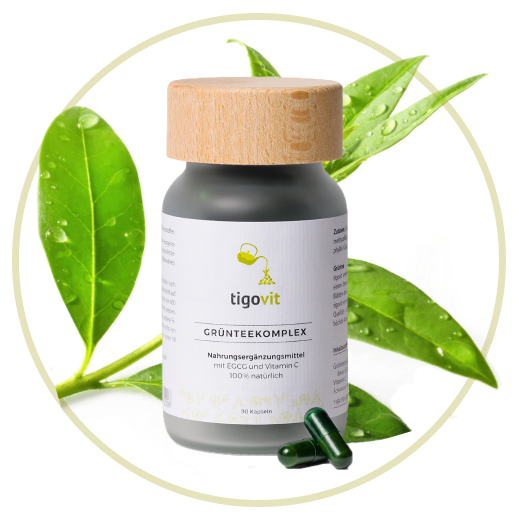
Author: Iris Sretenovic
There are many recipes and ways to care for the skin in winter. However, it is important to know what is right for the individual, because not all skin is the same and not all care is the right care. It must be adapted to the age and the skin type must be correctly determined. Many think they know their skin well, but daily use of creams, gels, cleansers and tonics can dry it out or contribute to extra sebum secretion, making the face even oilier.
What are the skin types?
- Oily skin:
Oily skin is thicker than normal skin and has visible poresThe skin ages more slowly and wrinkles appear later. Oily skin secretes more sebum. This can lead to blockages and inflammation in the pores, the channels of the sebaceous gland follicles, which become visible as blackheads and pimples.
If the care of oily skin is not sufficient, inflammation and acne can occur. This skin does not need extra moisture, except in the dry summer season.
- Combination skin:
Combination skin is known for the T-zone. The forehead, nose and chin are oily, while the cheeks, eye area and neck are dry. This skin needs to be treated with different creams and tonics because different parts of the face need different moisturisation.
- Dry skin:
Dry skin is soft, thin, ages faster and wrinkles appear earlier. This type of skin often flakes and due to the lack of protection (protective oil layer), temperature fluctuations are harder to bear.
Because it is thin, the capillaries that tend to burst are more visible.
On the other hand, pimples are less common on dry skin, but it can crack easily and feel rough. It is important to treat such skin with creams that moisturise the face well. It is also important to make sure that the cleanser does not contain alcohol.
The universal rules of facial care
To keep your skin healthy, smooth, firm and beautiful, you need to cleanse it regularly and treat it with suitable and high quality skin care productsmoisturise with products that suit your skin type.
Research has shown that the best skin products are those that contain organic ingredients. There are also phenomenal home recipes that our grandmothers used to care for their face and body skin. The most famous beauty brands use various herbal or fruit extracts. Herbal teas have always been used in cosmetics and are known to soothe inflamed areas in the body and on the skin.
THE FUTURE BELONGS TO (GOOD) BACTERIA IN CREAMS
What if (good) bacteria are the key to healthy, youthful skin? This could be a real Revolution in cosmetics mean. Science is moving more and more in this direction, so much so that some studies have already shown that the live bacterium Bacillus subtilis has a positive effect on inflammatory areas, nourishes, hydrates and "rejuvenates" the skin.
In addition, studies have already been conducted on gut microbiota: Here it was shown that bacteria were more effective than antibiotics in fighting infections and building a healthy epidermis. There are creams full of good bacteria and without preservatives! Cosmetics promise even more revolutionary discoveries. Tomorrow's cosmetics will no longer be based on skin type, but on microbiota.
Green tea in skin care

Our facial skin is most exposed to external weather conditions in winter. That is why it is also most vulnerable during this time. In this case, green tea can help us, because the special thing about it is the large amount of amino acids. Amino acids strengthen the immunity of your face, so you are protected from external influences. Moreover, green tea prevents pimples and subcutaneous acne caused by stress. However, it is not all-powerful.
They thus strengthen the protective barrier of the outer skin layer, but what happens to the inside of the skin?
A powerful antioxidant reaches a deeper layer of the facial skin and regenerates the cells. It strengthens damaged cells and restores their strength and vitality. The antioxidant should be able to successfully fight the first signs of skin ageing and make skin cells produce more collagen. Scientists believe that the Antioxidant EGCG can promote the formation of new healthy and strong skin cells with normal pigmentation. Old cells disappear, as do skin blemishes and acne scars.
Green tea contains magnesium, manganese, potassium, many B vitamins, caffeine and tannin. All these substances are good for our body and also for the skin. However, caution is advised because caffeine is a strong ingredient that is not always ideal for sensitive facial skin. Therefore, caffeine is generally only recommended for cleansing the face, while leaving out the area around the eyes.
Remember that there are many traditional recipes for great green tea face masks, for example one made with green tea and lemon for blemishes. All these recipes are still used and are applied as magical facial treatments in luxury spas around the world. Further proof, that green tea is a perfect ingredient if you want to care for your skin properly.
5 tips for facial care in winter:
1. face cleansing
The fact is: cleansed skin takes Face creams better on. It is important to know that morning and evening facial cleansing are different. Cleanse with lukewarm water, not too hot, as this can cause irritation. If possible, choose soft water for washing. When the skin is clean, it absorbs the nutrients from the night cream best.
2. toning
Toning, in addition to cleansing the face, restores the skin's natural pH, refreshes and hydrates it, which is important in both winter and summer. The facial tonic is applied with cotton wool and selected according to the skin type.
3. caring for the skin - the right creams
The choice of the right Day cream depends on the skin type and age, and whether the skin still needs an extra kick of care. Creams are used for hydration, regeneration and protection, and there are skincare lines that are used to combat wrinkles, for skin changes, and for care after the age of 30, 40 or 50. It is important to use creams specifically designed for the area around the eyes. The cream should be gently patted onto these areas with the fingertips.
The cream should not be applied in circular movements, but from the centre of the face outwards. The Night cream is important to nourish and regenerate the skin at rest, and just as your body needs sleep, your skin needs its beauty sleep too.
4. protecting the skin in winter
As it is obligatory to protect the skin from harmful UV radiation with a sunscreen in summer, this should also be done in winter. In order to stay soft and supple, it is necessary to use richer face creams, i.e. those that moisturise as well as oil. This creates a film on the skin that prevents it from drying out. It is important to use enriched creams and apply them before going out in the cold.
5. the skin is the mirror of health
Every change in the organs as well as the balance of the psyche and emotions are reflected on the surface of the skin through colour changes, skin impurities, pimples or other irregularities. For a healthy, radiant and well-groomed appearance of our skin, a balanced and healthy diet as well as a good health programme is important (supply of sufficient vitamins, hydration, physical activity, etc.).
In winter, low temperatures and cold wind as well as heating and dry indoor air contribute to dry skin. We cannot stop the cold and strong wind, but we can influence some things.
In addition to winter skin care and protection tips, Mayo Clinic scientists also recommend using indoor humidifiers to counteract winter skin dehydration. Your skin absorbs moisture from the air and you prevent dry skin.
With these tips, your skin will be fit for the whole winter and will thank you with a shiny and fresh appearance at every Christmas party!
Sources:
https://www.ncbi.nlm.nih.gov/pmc/articles/PMC5796122/
https://www.mayoclinic.org/diseases-conditions/common-cold/in-depth/health-tip/art-20048617
https://pubmed.ncbi.nlm.nih.gov/18471586/
https://www.ncbi.nlm.nih.gov/pmc/articles/PMC6502191/
https://pubmed.ncbi.nlm.nih.gov/31188689/





